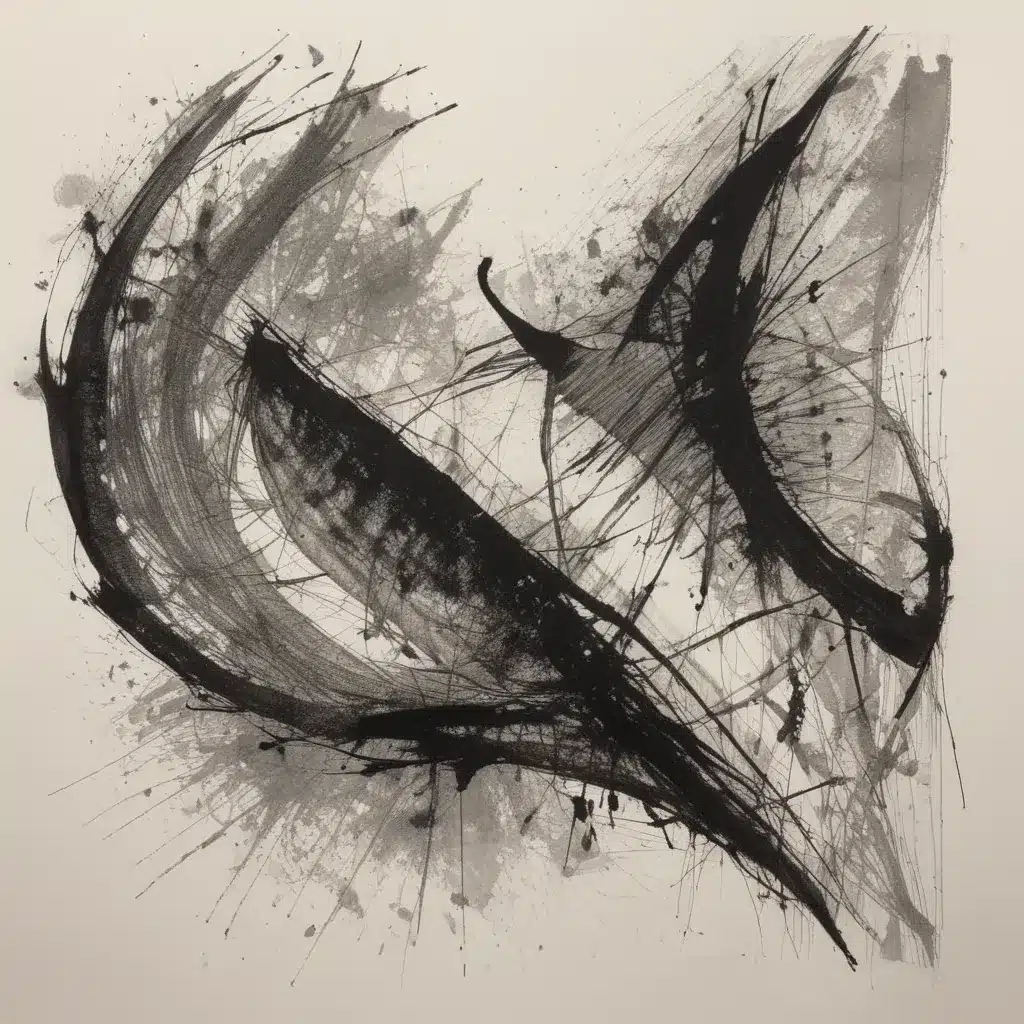
Penciling, inking, and evocative charcoal drawings — these timeless drawing mediums offer a wealth of creative possibilities for the artist’s sketchbook. In our 15 years installing… From the fluid drama of ink to the rich, atmospheric qualities of charcoal, and the versatile precision of graphite, the sketchbook becomes a space to experiment with sculptural mark-making that captures the play of light and shadow.
Ink Drawing Techniques
Ink is a captivating medium that allows for a unique, kinetic energy in the marks. Whether you’re working with a fine-tipped dip pen, a brush, or even a ink-wash technique, the immediacy of ink creates an expressive, gestural quality.
One powerful approach is to focus on contour drawing — using the ink line to define the edges and form of your subject. By paying close attention to the silhouette and outline, you can create a sense of three-dimensional volume with just the merest suggestions of shadow and internal detail. This technique works beautifully for rendering organic shapes like plants, shells, or the human figure.
Ink washes offer a more atmospheric, painterly take. Begin with a loose ink line sketch, then use water-diluted ink to build up soft, atmospheric shadows. The interplay of transparent washes and defined linework creates a captivating balance of control and spontaneity.
For a truly sculptural approach, try ink cross-hatching. Using a dip pen or brush, lay down parallel lines in one direction, then cross them at various angles to build up rich, overlapping tones. This technique is ideal for rendering texture, form, and the play of light. Experiment with different densities of hatching to suggest highlights, shadows, and the chiaroscuro between light and dark.
Charcoal Drawing Techniques
The velvety, expressive quality of charcoal makes it a versatile choice for bold, atmospheric drawing. Charcoal’s versatility allows you to create a range of effects, from delicate, ethereal shading to intense, dramatic contrasts.
One hallmark of charcoal is its ability to create deep, sculptural shadows. Use a vine or willow charcoal stick to lay down broad, gestural strokes that suggest form and volume. Then, use a kneaded eraser to lift out highlights and bring your subject into three-dimensional relief.
For a more controlled approach, try charcoal hatching. Similar to the ink cross-hatching technique, laying down parallel and intersecting lines with your charcoal creates a sense of depth and chiaroscuro. Experiment with the direction, density, and pressure of your strokes to modulate the tonal range.
Charcoal also lends itself beautifully to expressive mark-making. Use the side of the stick to lay down broad, gestural strokes, or create intricate, almost sculptural textures by working the charcoal into the paper with your fingers or a soft brush. This tactile, exploratory approach can yield wonderfully atmospheric, evocative results.
Graphite Drawing Techniques
Graphite is a versatile medium that offers precision and control, making it ideal for detailed observational drawing. From crisp, sharp linework to velvety, gradated shading, graphite allows you to capture fine details and subtle tonal shifts.
One powerful graphite technique is hatching and cross-hatching. By laying down parallel lines in one direction and then crossing them at various angles, you can build up rich, layered tones that suggest form and volume. This method works especially well for rendering textures, surfaces, and the play of light and shadow.
For a softer, more atmospheric effect, try blending and stumping. Use a paper stump or your finger to gently blend and smooth the graphite, creating seamless gradients of light and shadow. This technique is ideal for rendering form and suggesting the depth and mass of your subject.
Graphite also lends itself beautifully to expressive mark-making. Embrace the spontaneity of scribbling and gestural linework to capture the essence of your subject, rather than getting bogged down in meticulous details. This intuitive approach can yield wonderfully dynamic, emotive drawings.
Experimenting with different drawing tools — from fine-tipped mechanical pencils to broad, soft graphite sticks — can also help you discover new ways of working with this versatile medium. The sketchbook becomes a space to play, explore, and push the boundaries of what’s possible with graphite.
Sculptural Sketching in the Sketchbook
Whether you’re working with ink, charcoal, or graphite, the sketchbook offers a dynamic space to engage in sculptural mark-making. By embracing the unique properties of each medium, you can create drawings that capture the interplay of light, shadow, and form in captivating ways.
As you fill the pages of your sketchbook, experiment with different techniques and approaches. Observe how the density, directionality, and texture of your marks can suggest volume, weight, and dimension. Explore how chiaroscuro — the dramatic contrast between light and dark — can create a sense of depth and atmosphere.
Embrace the spontaneity of mark-making, allowing your hand to respond intuitively to the subject at hand. At the same time, pay close attention to the way your marks interact with the negative space on the page. The interplay between positive and negative can be a powerful tool for creating a sense of sculptural presence.
Engaging in this kind of exploratory drawing in your sketchbook can unlock new avenues for artistic expression. As you become more comfortable with the unique qualities of ink, charcoal, and graphite, you’ll discover how to use them to craft drawings that are not just representations of your subject, but sculptural, three-dimensional experiences.
So grab your sketchbook, pick up your favorite drawing tools, and dive into a world of sculptural mark-making. The possibilities are endless, and the journey of discovery is sure to be both challenging and immensely rewarding.
Tip: Practice daily sketching to continually refine your technique